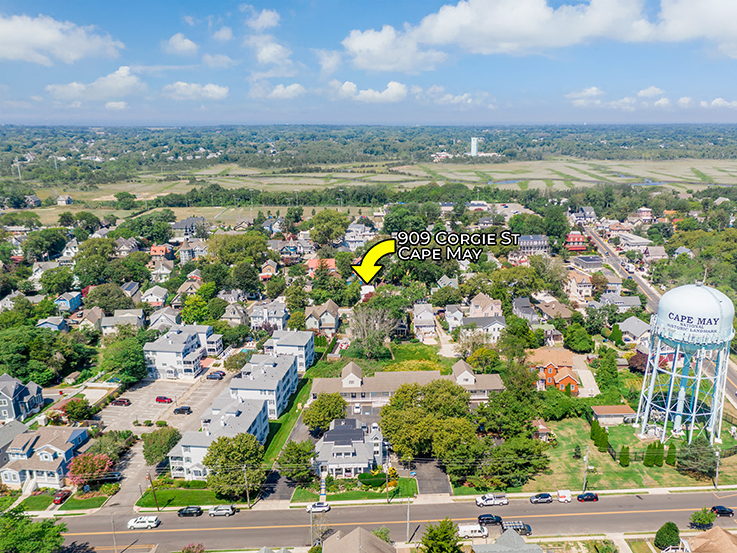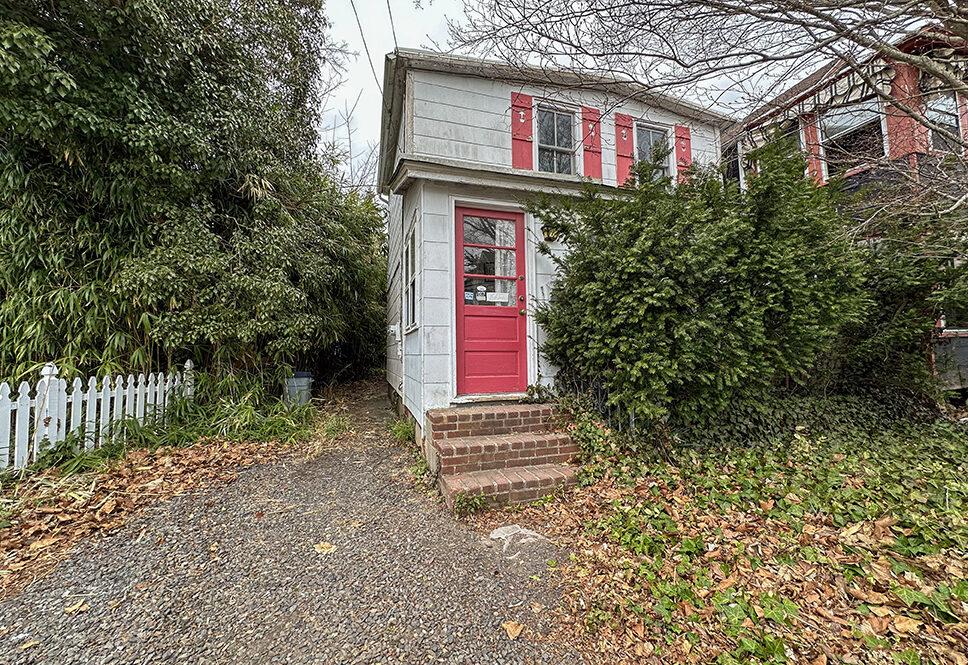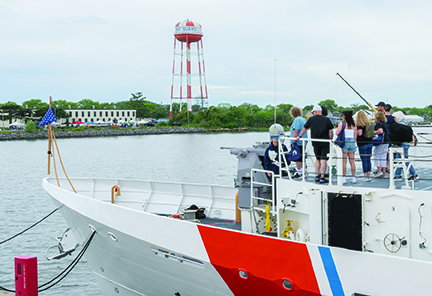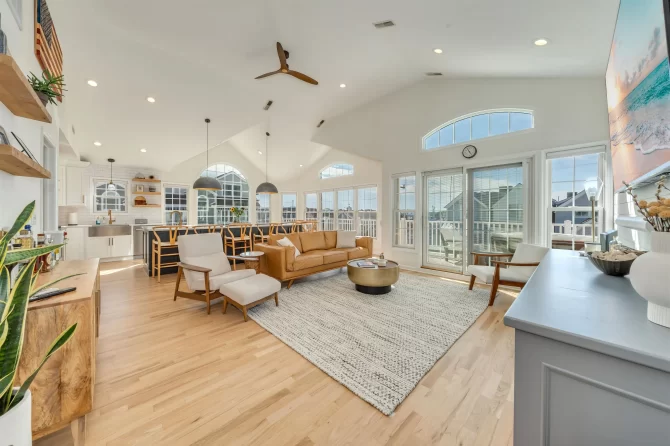CAPE MAY — Why do people dream of moving to Cape May? It certainly can’t be for just the beach — lots of places have a beach.
Is it the weather? Would that be the weather in the summer or the winter? Could it be something special that just can’t be replicated in any other place? A love of history, of stories, of the last tangible links to an older way of life?
Take Corgie Street, for example. This little lane hidden behind the main thoroughfare of Washington Street is completely unlike its busier neighbors, and yet remains quintessentially Cape May.
Would-be beach hippies play guitar on the porch of one of the small cottages behind the post office, while on other streets one hears only the thump of a stereo or the sound of endless construction and traffic.
On Corgie Street, breezes whisper through the trees lining the entire three-block stretch, and even in winter those breezes seem gentler and quieter than the neighboring avenues.

The homes themselves seem less like a tourist attraction (albeit a tourist attraction with more than a century of appeal) and more like a tiny seaside community, huddled close but not too close, ducking the wind and spray under roofs built by the same men who built boats to survive the waves.
Even the history of this street, a gift from a man who wanted his church to have a rectory, later expanded to access a dairy farm serving the island, seems unlike anything one expects to find today, where such gifts are quite rare.
Just before it ends at the Duck Pond on Madison Avenue, this tiny village within the city encloses around the house at 909 Corgie St. Old bamboo plants and mature trees surround the brightly painted front door of a modest home on an irregular lot, a home built in 1865 and only lightly changed through the years.
The lot it stands on has been subdivided many times, leaving a green heart intact that’s 37 feet by 90 feet. The house itself is modest; not a Queen Anne or Italianate palace to host dozens of strangers or an embassy ball, but a 1,432-square-foot single.
Its nearly flat, shed-like roofline covers three bedrooms on the second floor connected by a long hall. Luckily, previous owners have installed not one but two full bathrooms, one on each floor.
At first glance, it seems not much has changed from the day this home was built. The slightly asymmetrical facade still looks as practical and sturdy as it would have back in 1865.
This was a house for the family of a worker, much like the river pilot said to have donated this land to the church 20 years earlier.
Someone has enclosed the front porch since then, but it keeps the same modest lines it has always had.
Inside, the front room is a long, simple space with many ways to be reinterpreted as a great room or several zones of living space.
Everything that has been done to this house happened some time ago, making this property one of the rarest of commodities in Cape May: unflipped, unmodified (comparatively, at least) and unmuddled. The next owner can boast they found the last of the real Cape May fixer-uppers, with no clumsily installed ductwork running awkwardly through a room; no weird angular adjustments made by a DIYer with no idea how to preserve 160 years of history while they race against the clock to make “cosmetic improvements.”
It’s true there are some very 1990s touches to the kitchen; but one need only look at the proportions of features like windows and doors, staircase and hallway, even the light moving through the wide-open living room to see how much of the original home has been kept intact.
This home has not escaped the passage of time, but time has been remarkably gentle and the previous owners have shown restraint when making their mark on the place.
The three bedrooms upstairs might as well be located in the 1860s: they are simple, wide and heated by electric baseboard so no major destruction has been inflicted on the walls beyond adding electricity.
There are closets, which local lore tells us we must never expect in a home built before 1960, and the largest bedroom has a little alcove to provide more privacy and take advantage of the slight L-shape to the home.
The old maps and records show that this home, which entered the Historic Register in 1970, was even smaller until successive changes in the 1880s and early 1900s — and then, that’s it. No more changes to the footprint or layout of this home were attempted.
At that time, the home (and most of the homes near it) were owned by the Bennett family, and it could be that owner William Bennet, a river pilot, was the actual inspiration for the myth of William Corgie; or it could be that William Corgie genuinely existed and was the uncle or cousin of William Bennet.
Church records from 1844 say it was William Corgie who donated the land around Corgie Street to his church on Franklin Street; census records insist that the land from Madison Avenue to Franklin Street belonged to the Bennetts. (The same records indicate this home was somehow on an 1850 map and built in 1890, so do beware of local legends even when they’re written down. Maybe especially when they’re written down.)
As such, it is almost miraculously intact. The fact that the last time this home was sold was way back in 1990 should maybe shed some light on how this occurred: it seems once people live here, they love it enough to keep it almost exactly as they found it.
Each family that lived within these walls chose independently to make only the most necessary of adjustments as decades passed.
With that in mind, the next owner has both decorative carte blanche and a serious legacy to uphold. Modest workmen’s cottages like this one not only formed the foundations of the community, surviving the fire that destroyed most of the district back in the 1870s, and withstanding nor’easters and passing hurricanes a time or two since.
This house in particular was a crucial piece when the entire Historic District was added to the National Register in 1976. River pilots were incredibly important to the growth of the island, as before the shipping channels of Delaware Bay were dredged, the shoals surrounding Cape May wrecked passing boats frequently, unless they were steered by a pilot who knew the place intimately.
The same boat race that brought the island the legend of (then) Prince Edward spending the day hiding out in the Chalfonte was only possible because of the skilled and fearless river pilots that did the actual steering of hugely expensive pleasure craft for their sports-mad owners.
They were later replaced by amateurs trained at the Corinthian Yacht Club in just the same way as the old Cape May Sea Light was replaced by a buoy once the shipping lanes were cleared and the risk of a grisly end was lessened.
Knowing this, the seemingly small and simple homes of river pilots like William Bennet (and Corgie, as legend has it) are a part of Cape May’s history that we should never forget, or lose. We might not allow every little factual detail get in the way of a good yarn, but lose the plot completely? That’s not the Cape May way.
By VICTORIA RECTOR/Star and Wave




